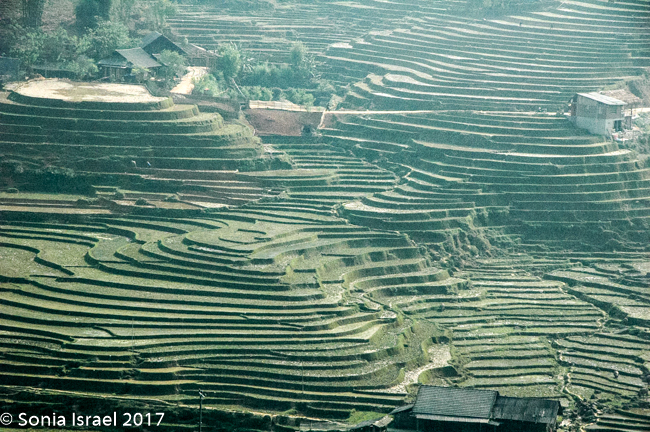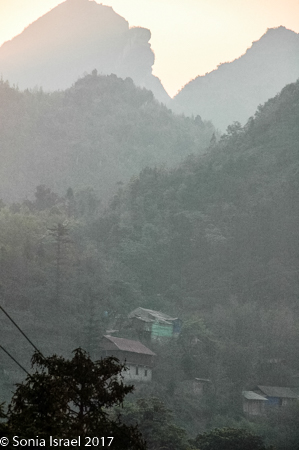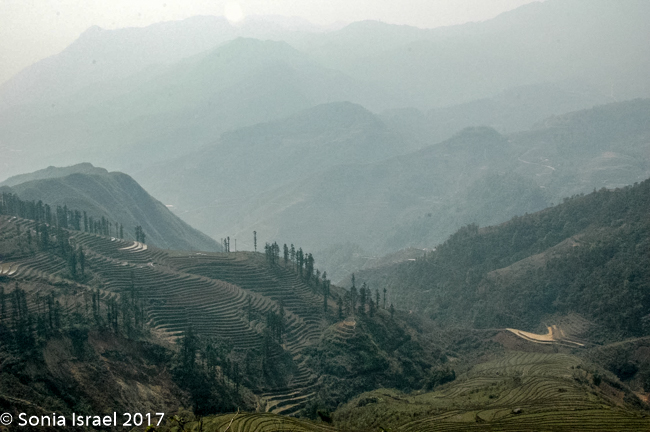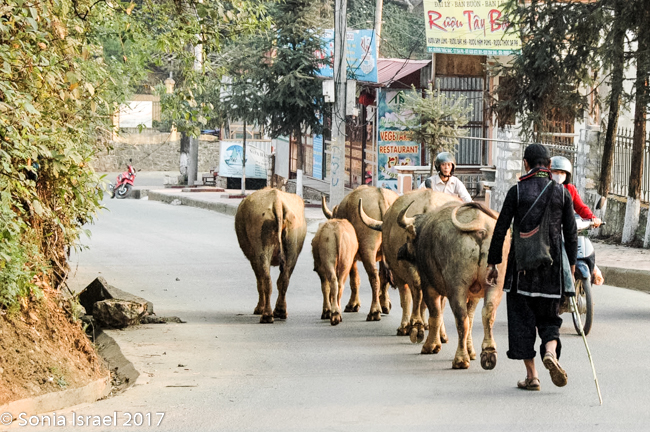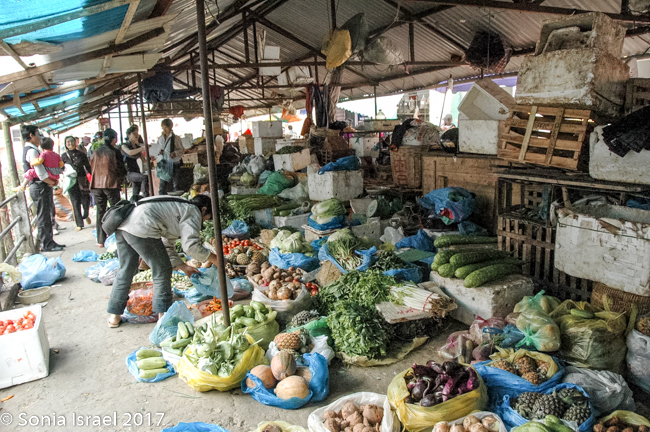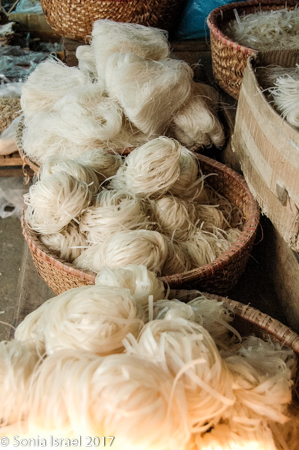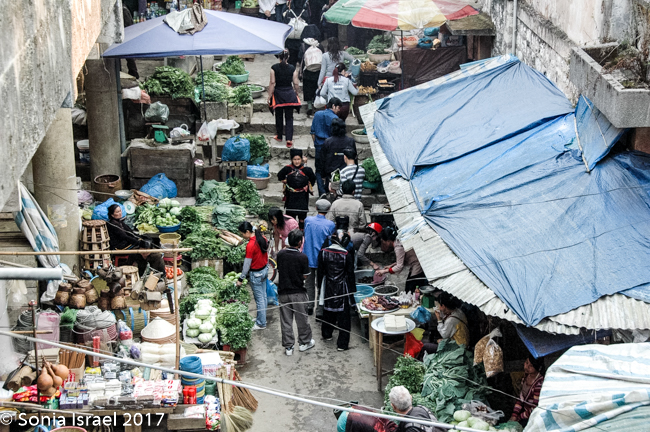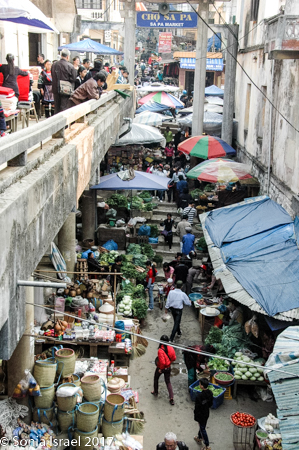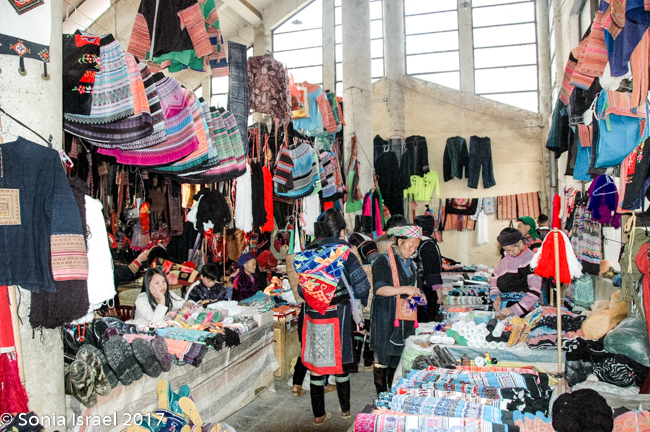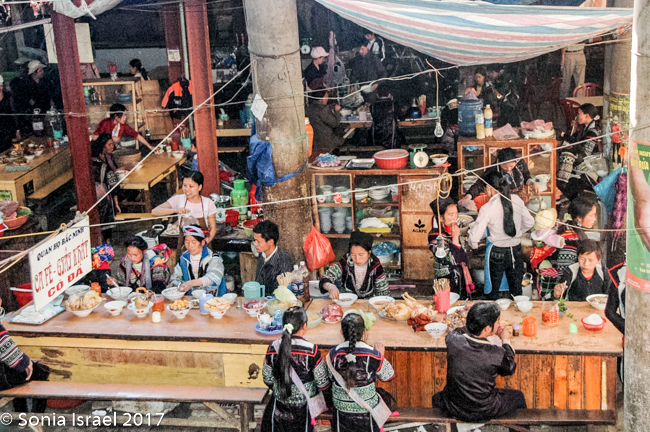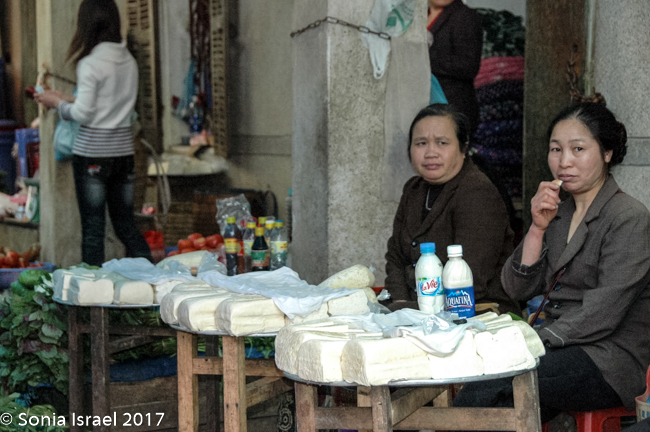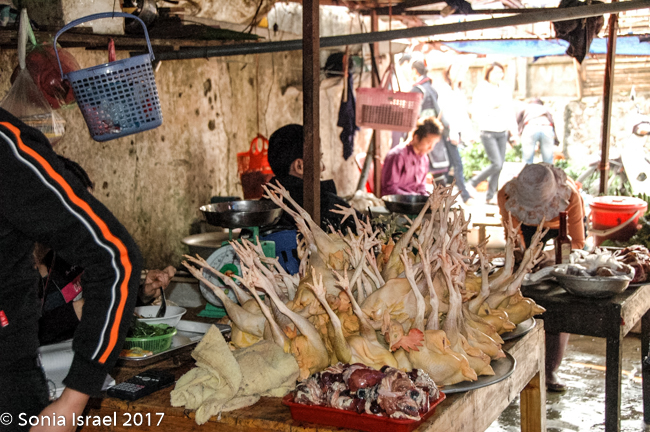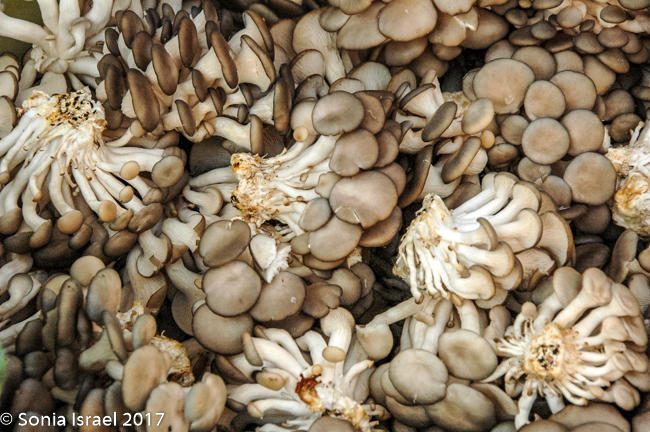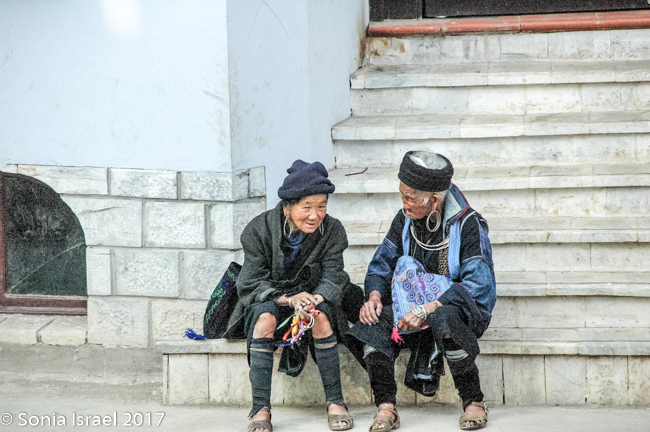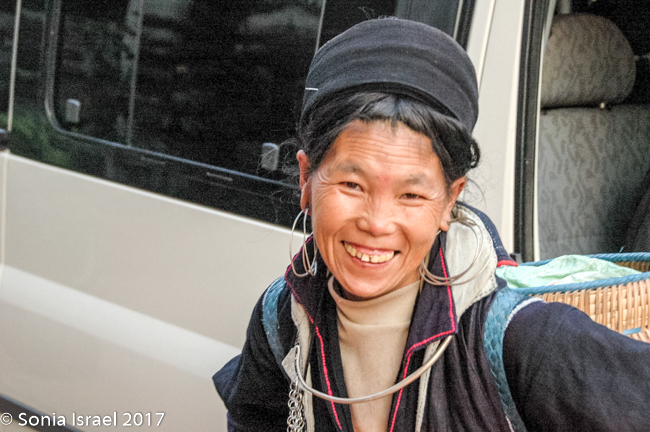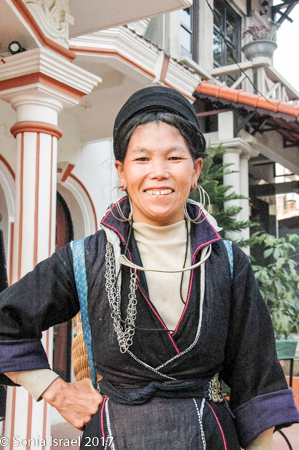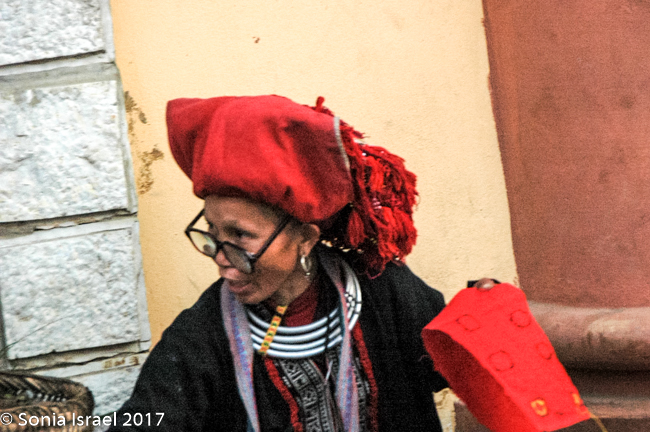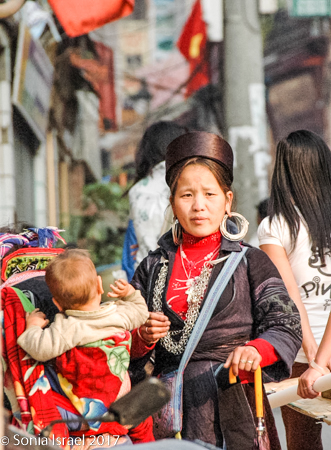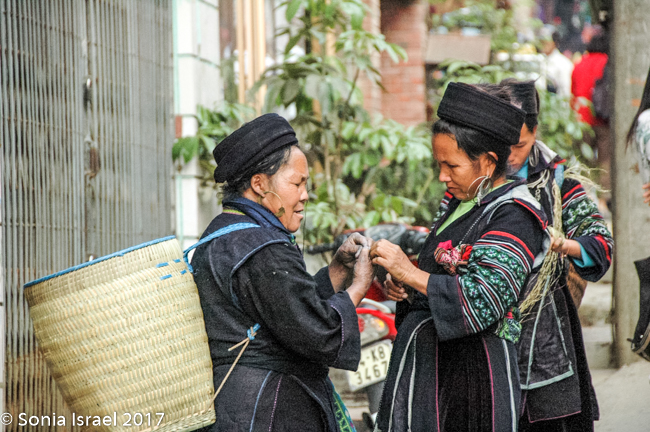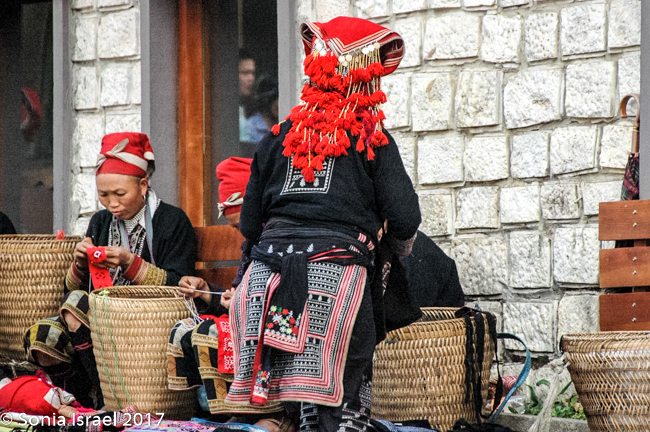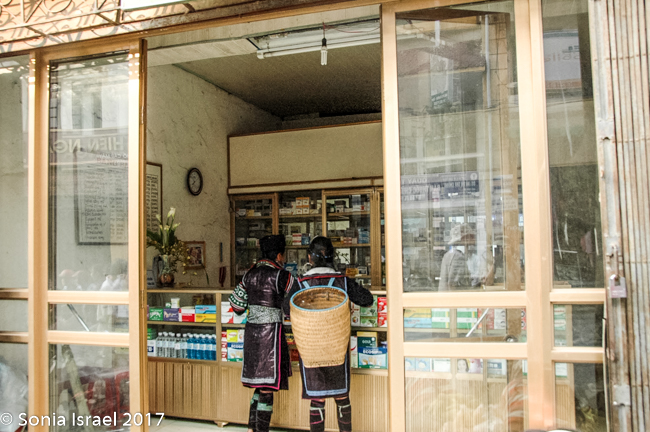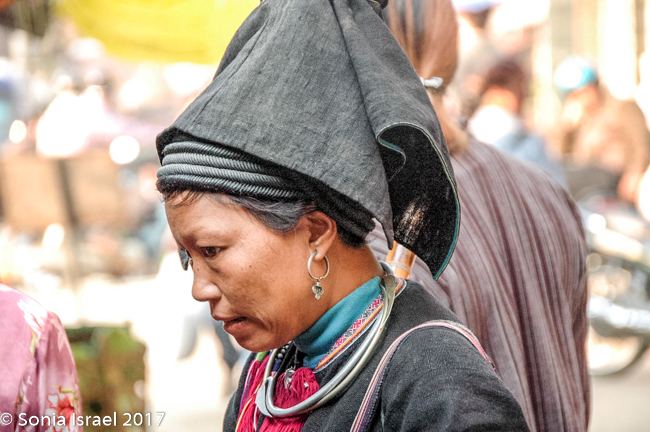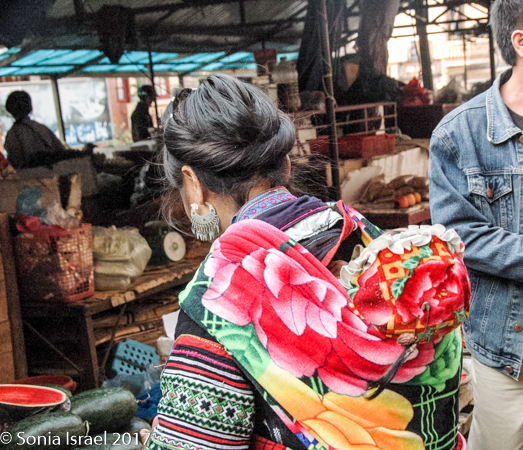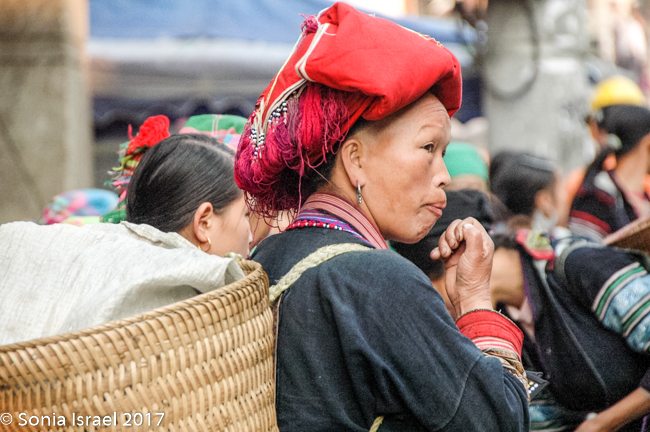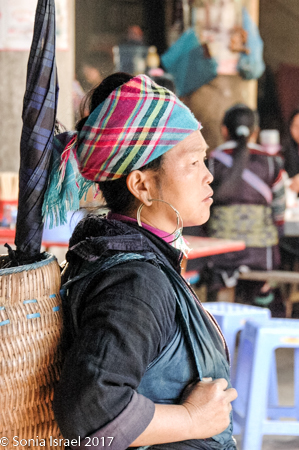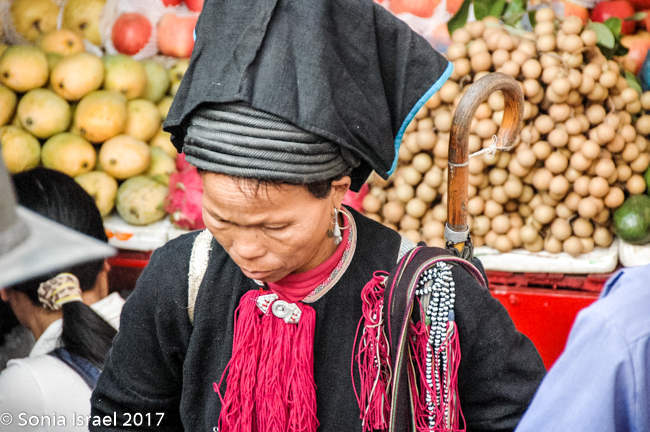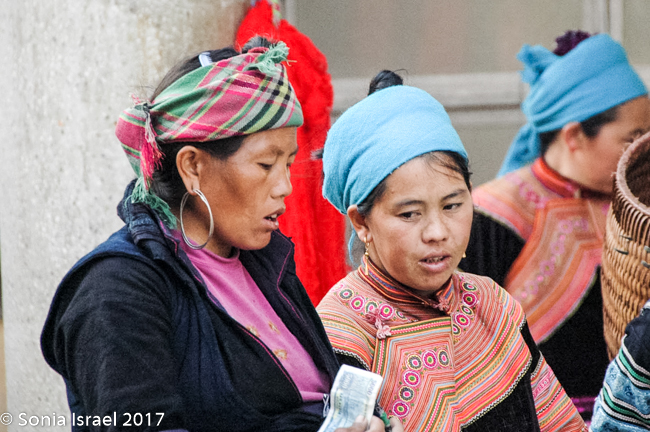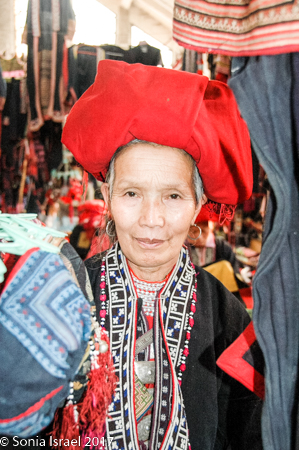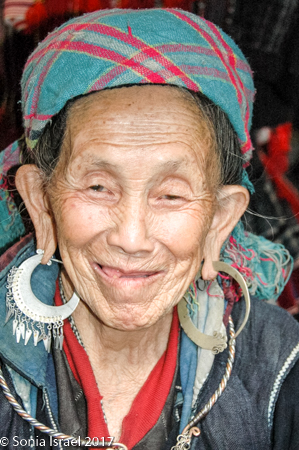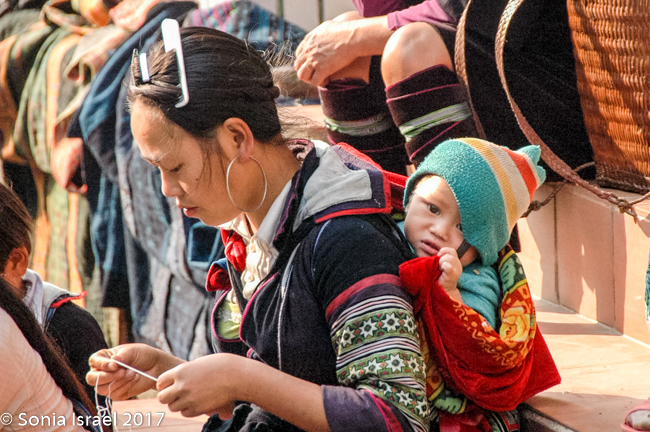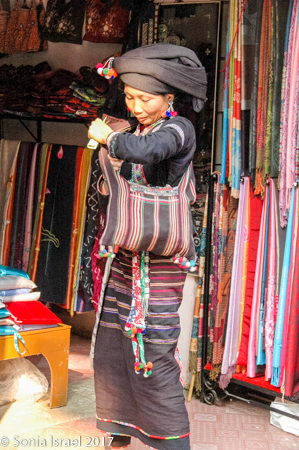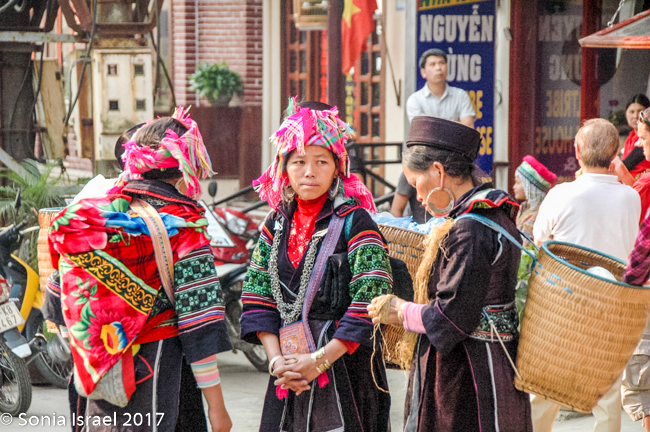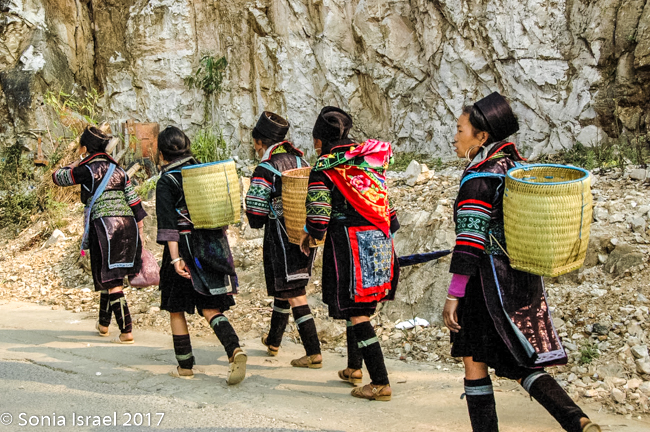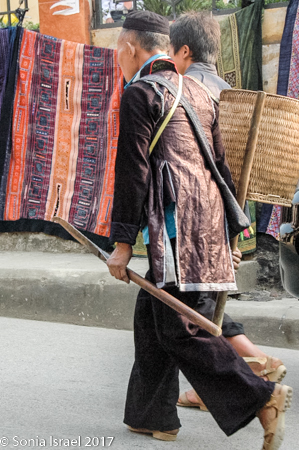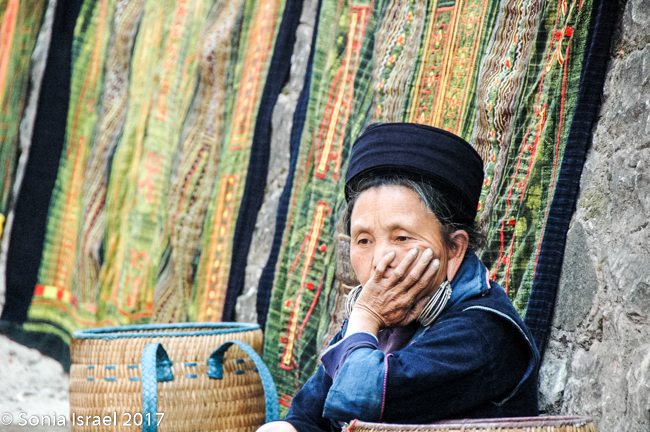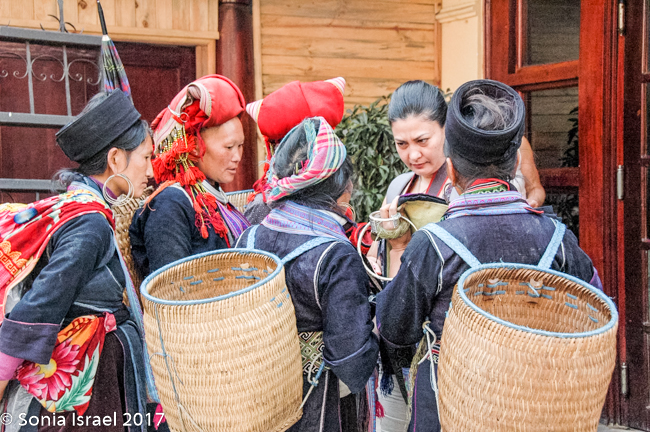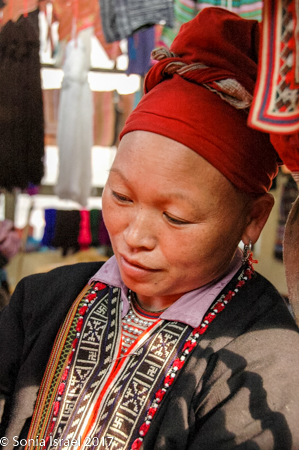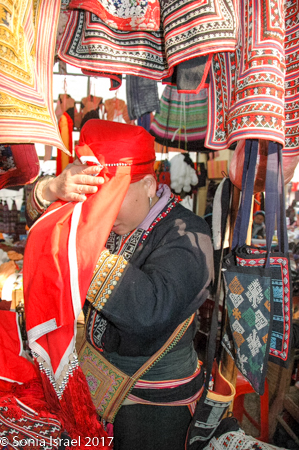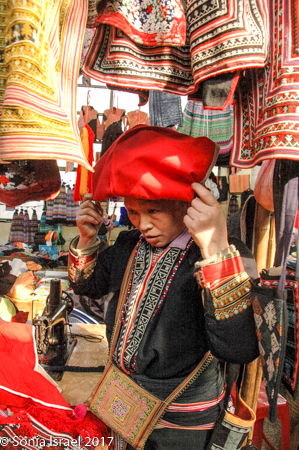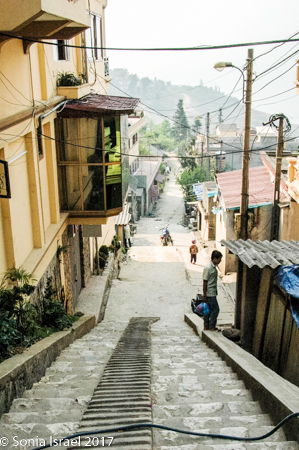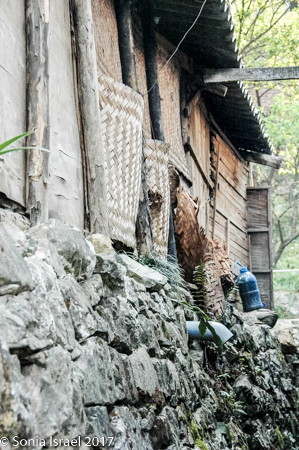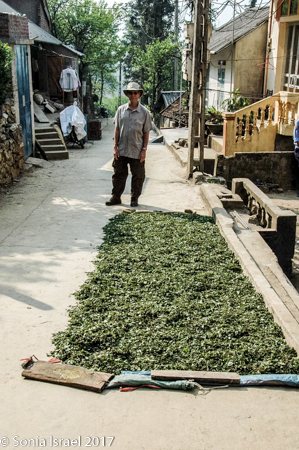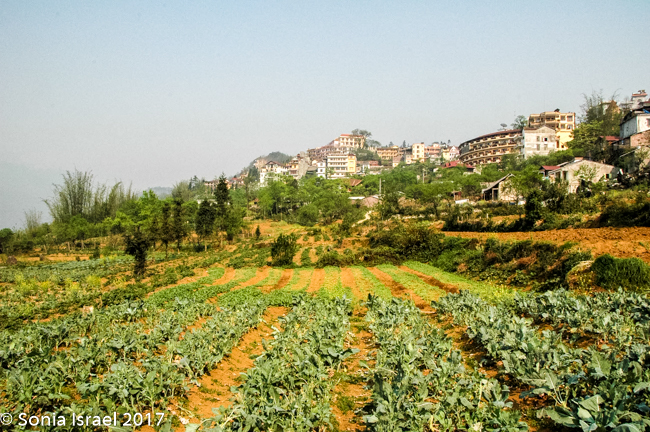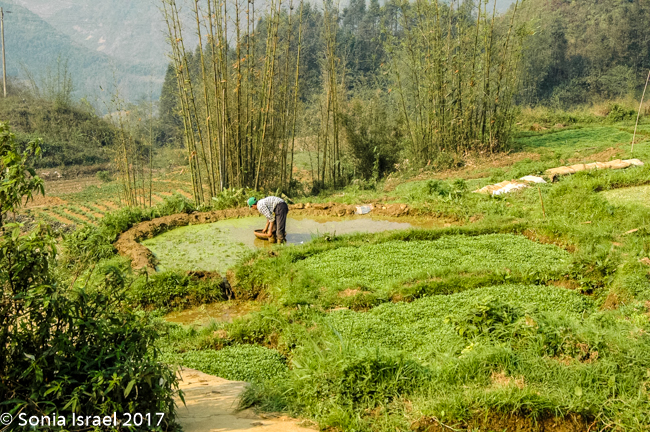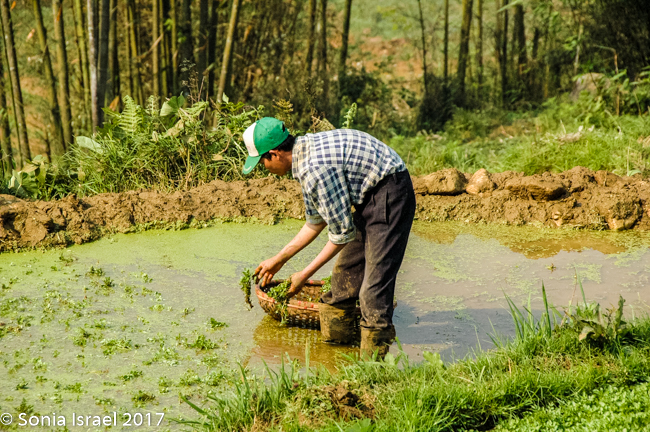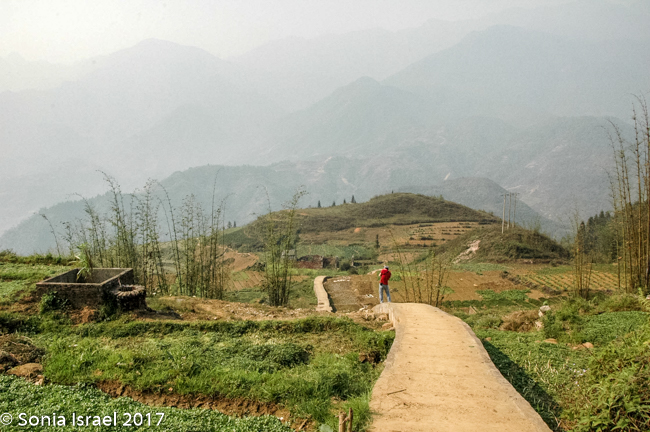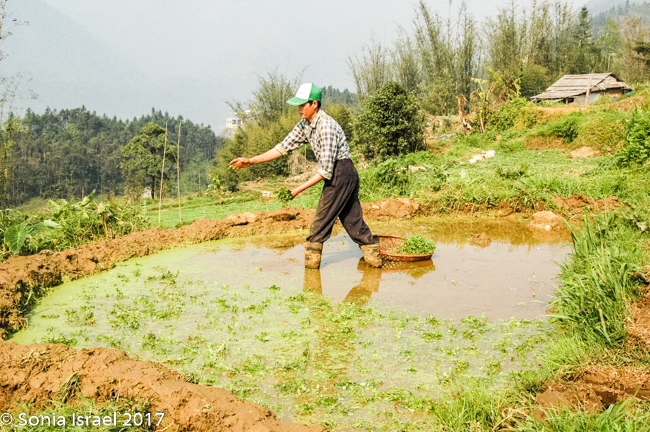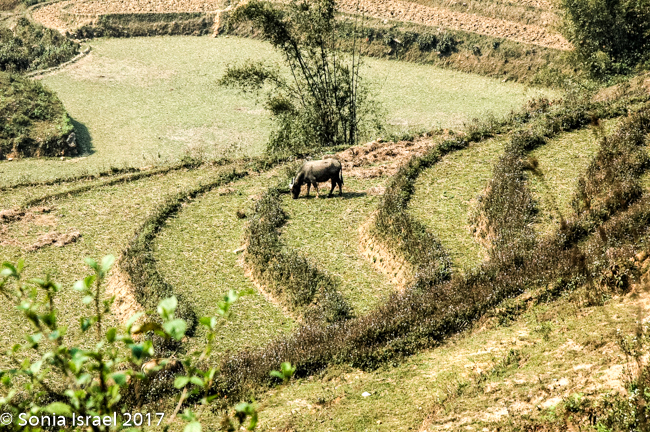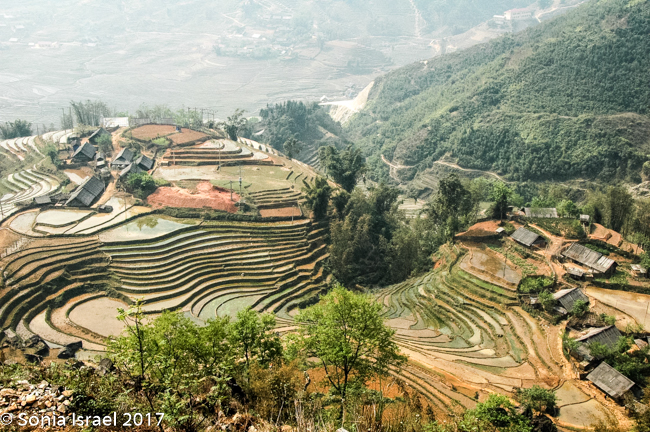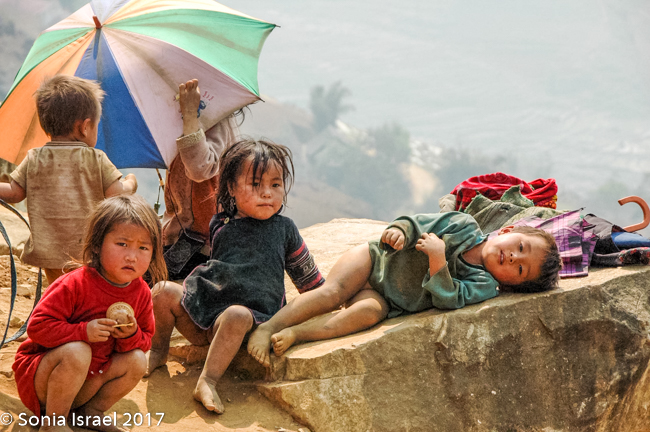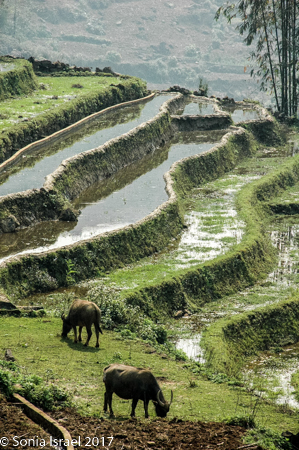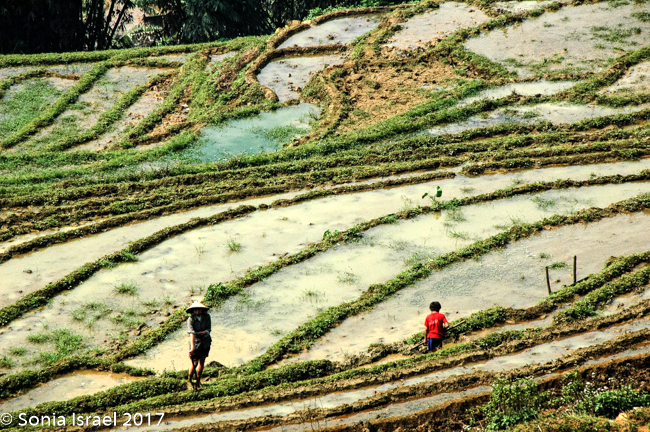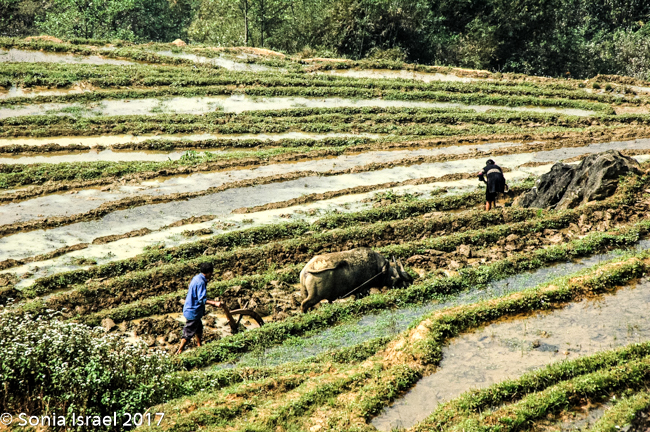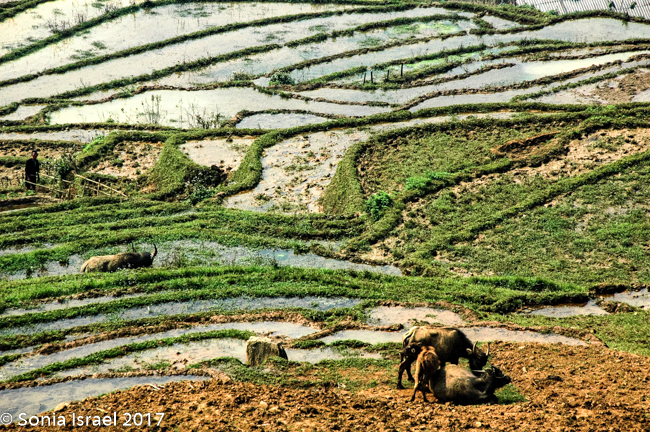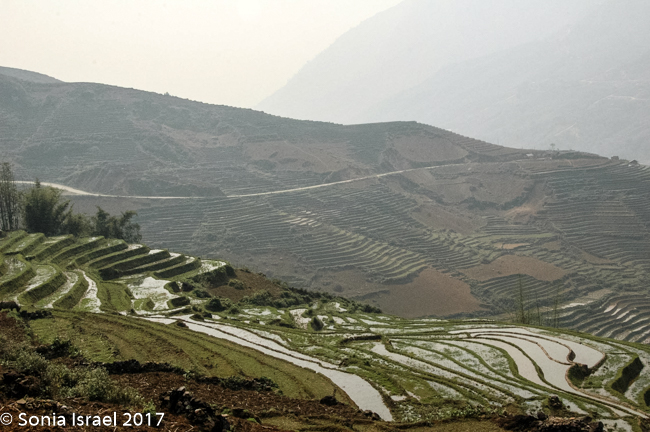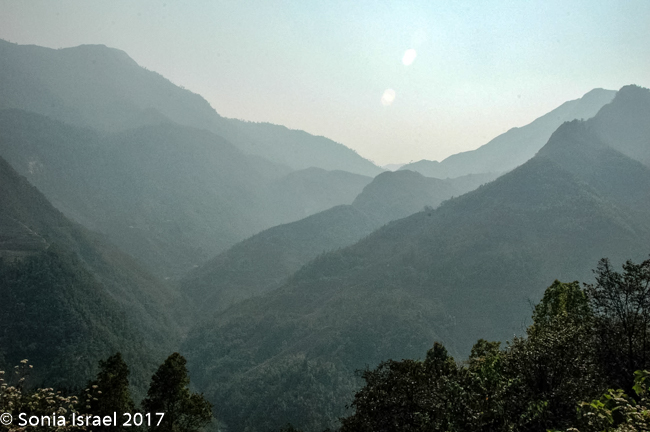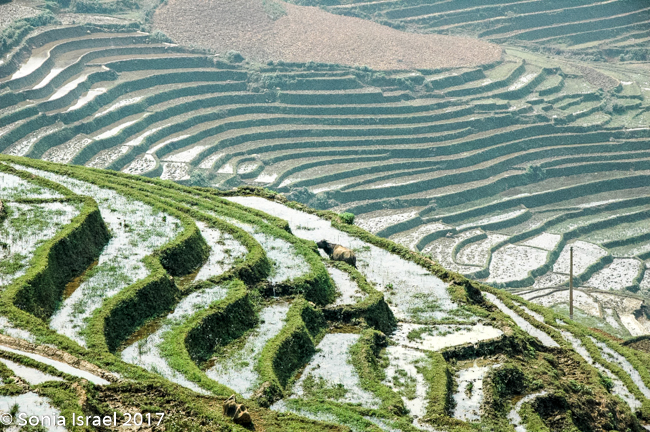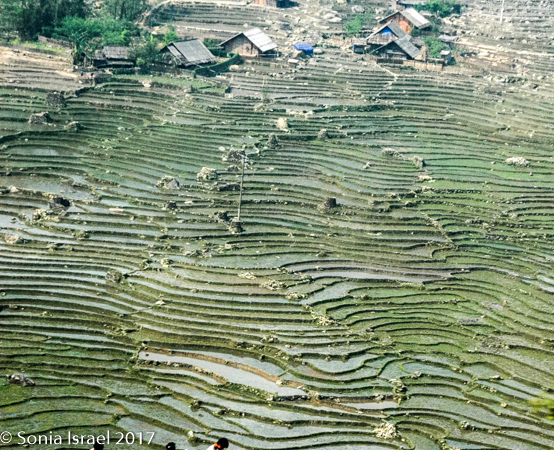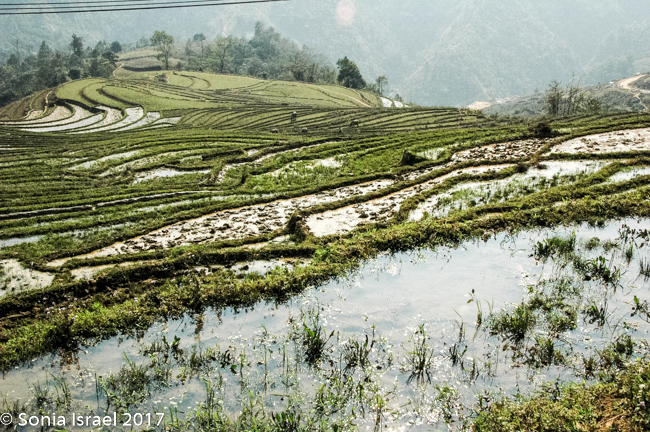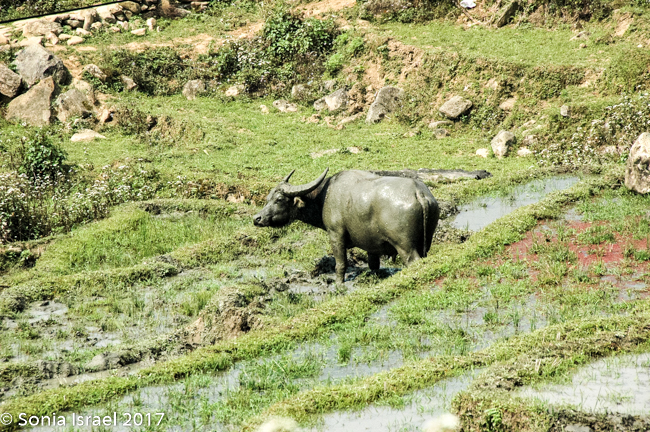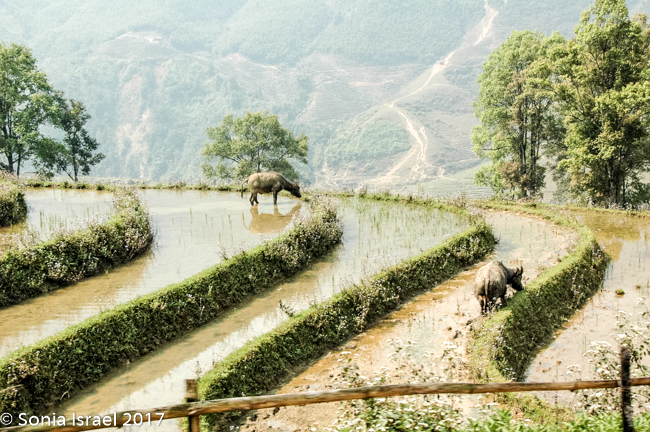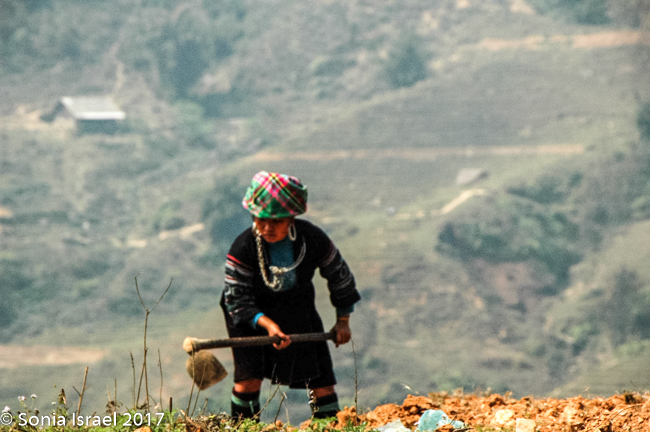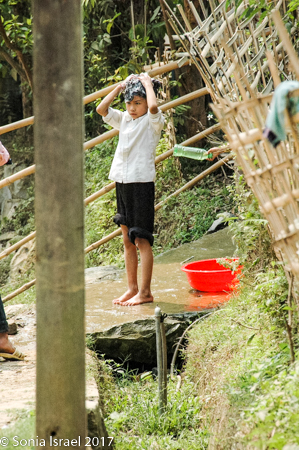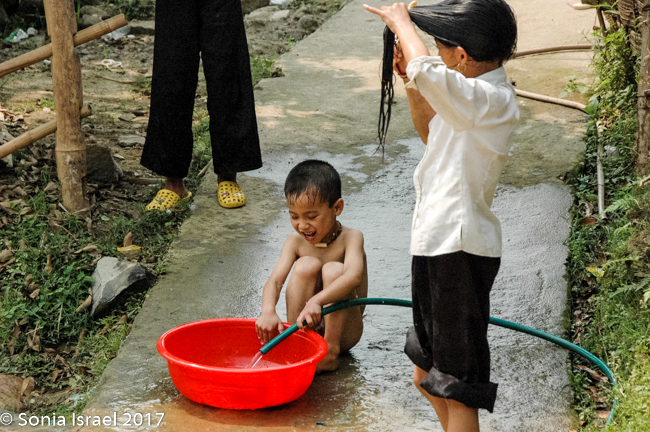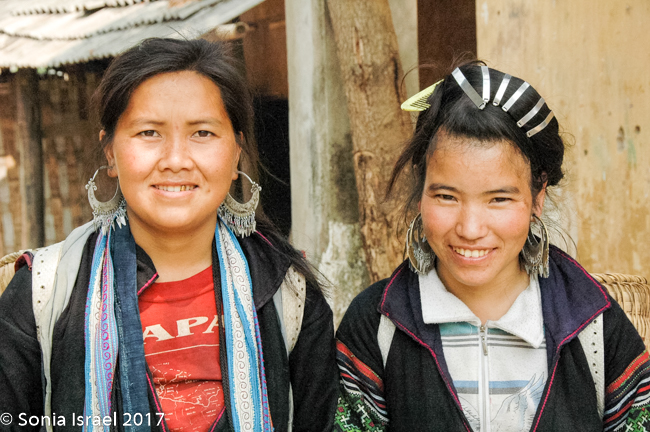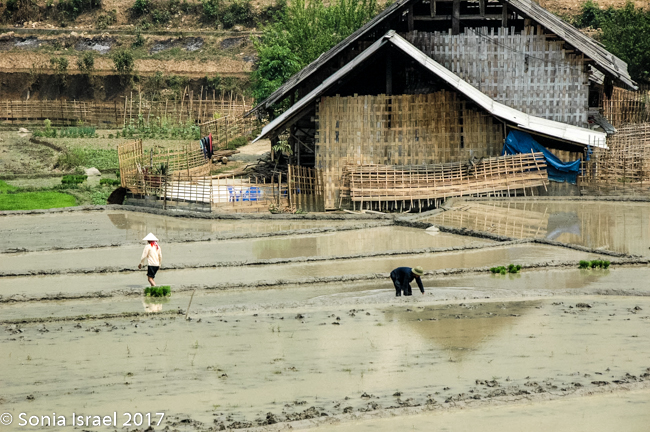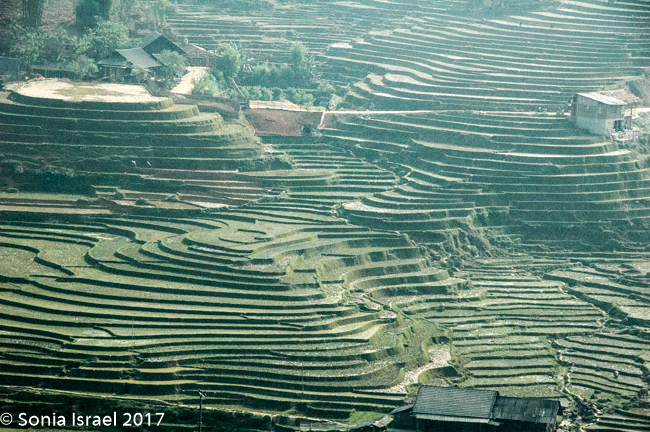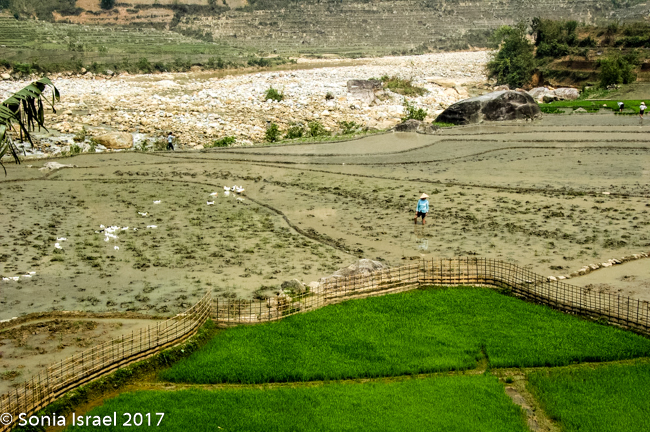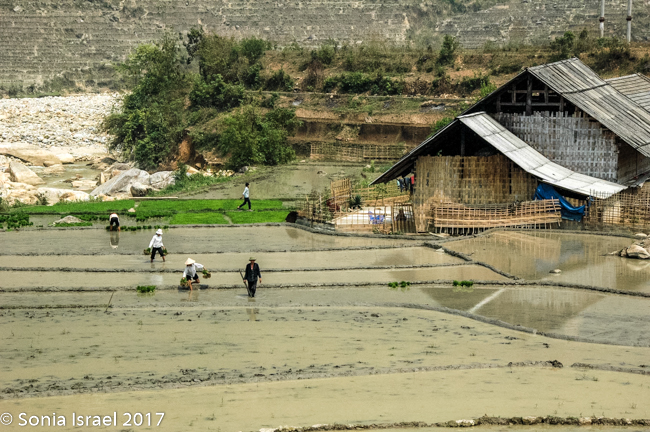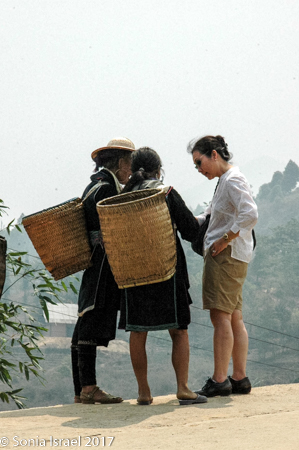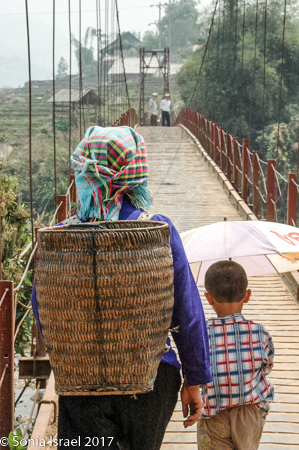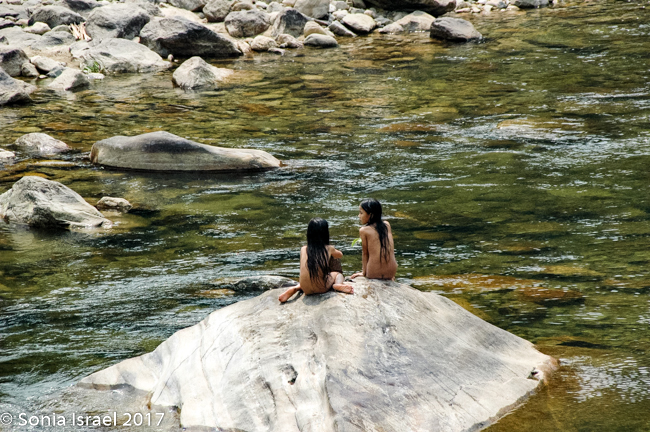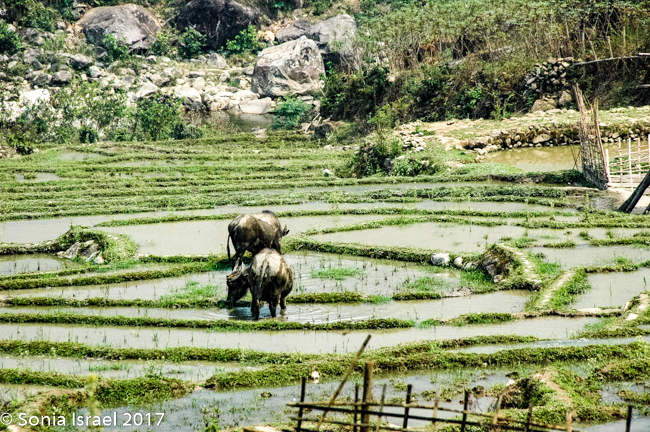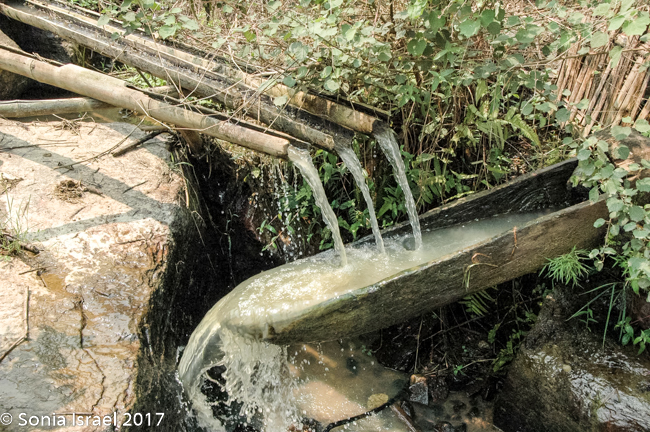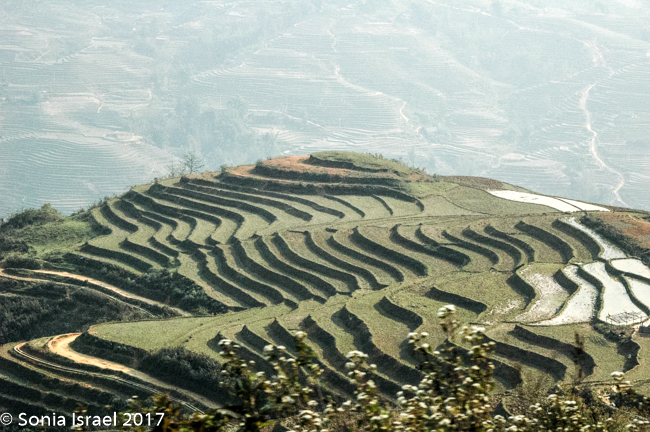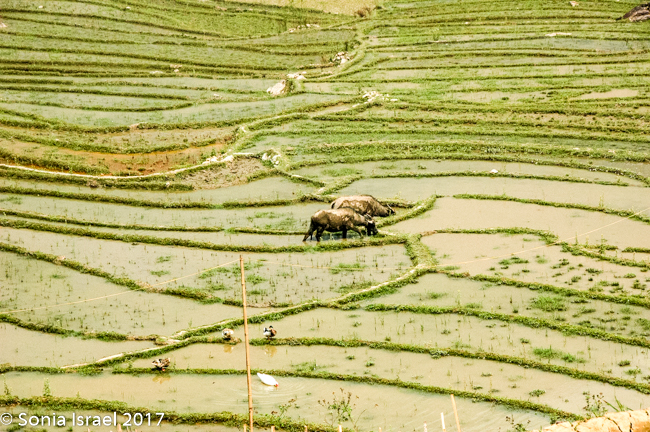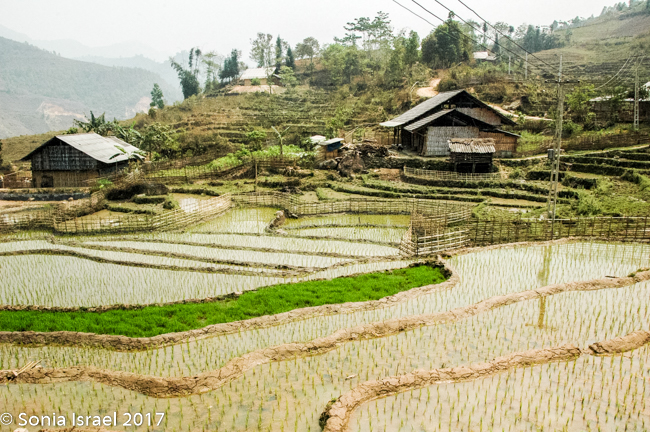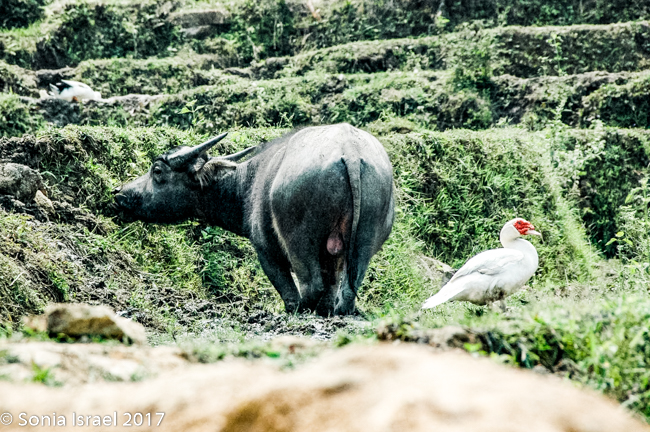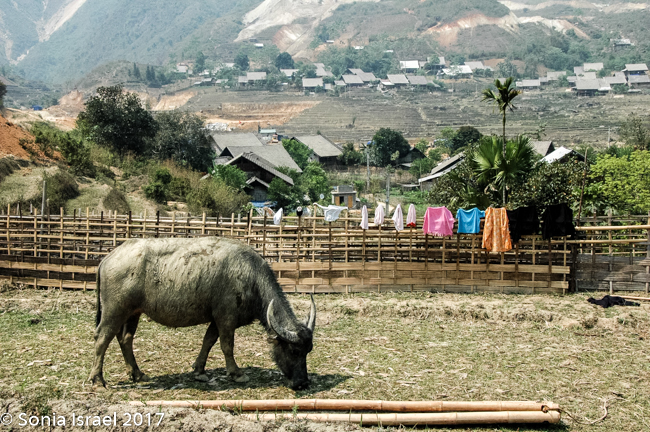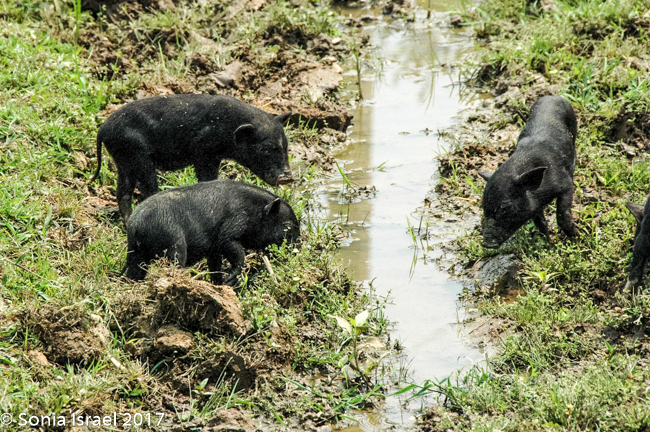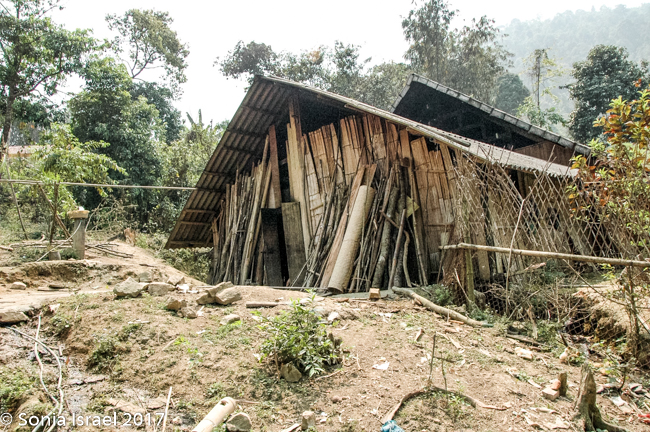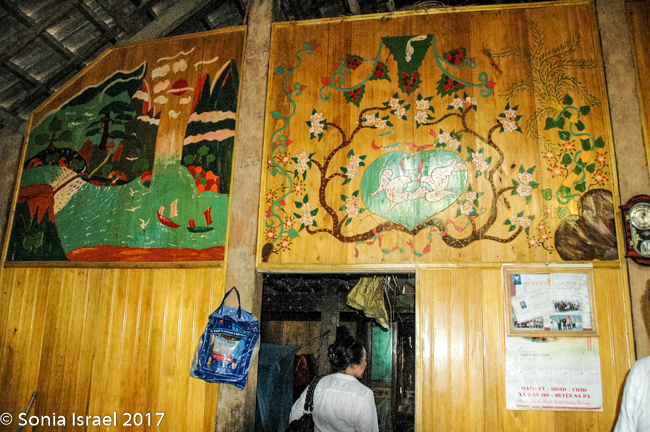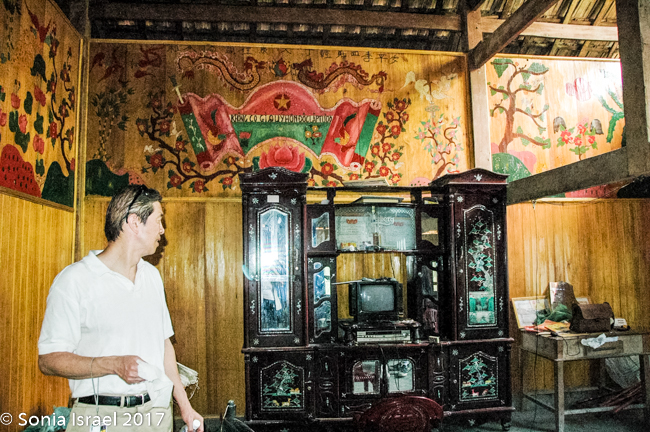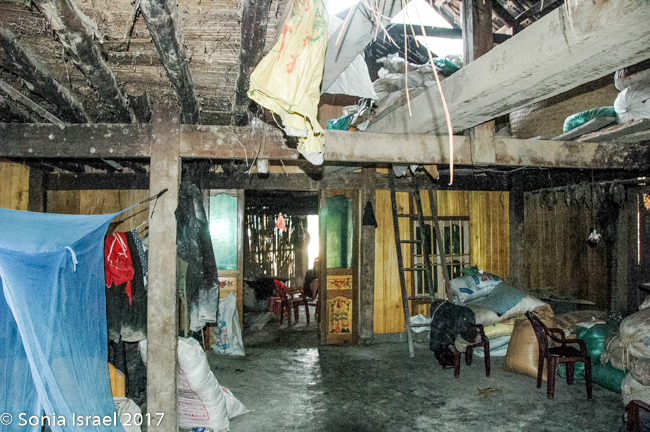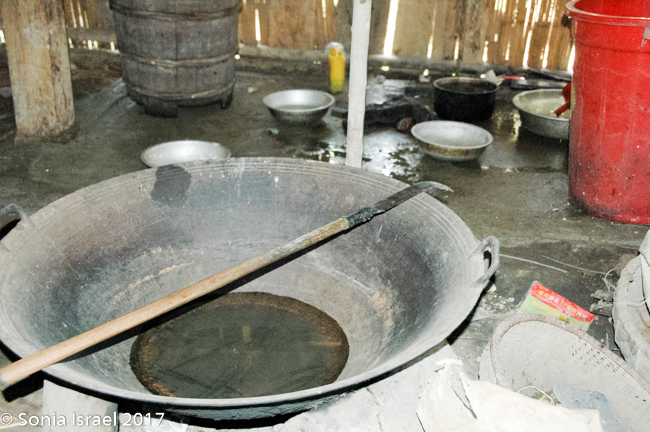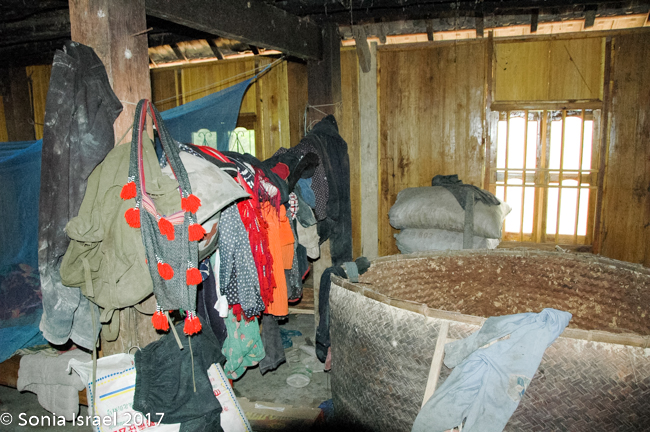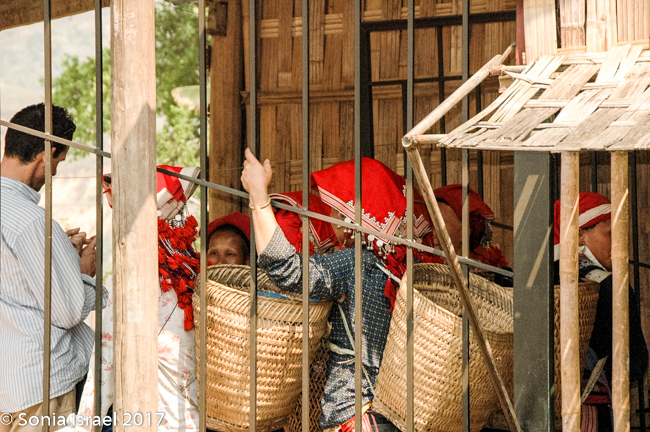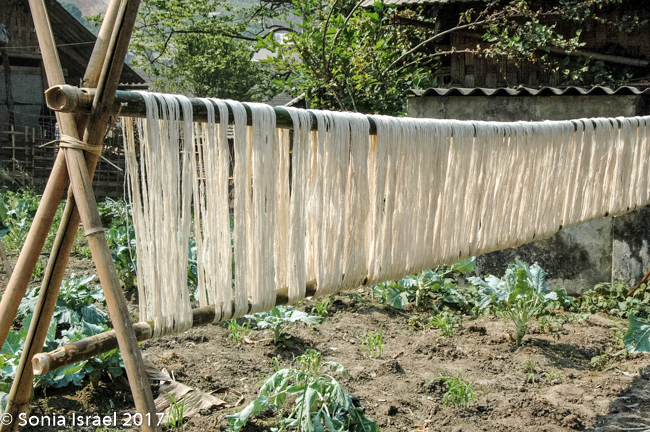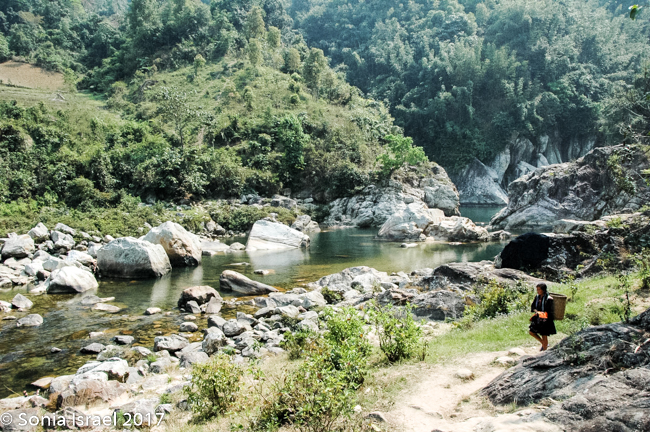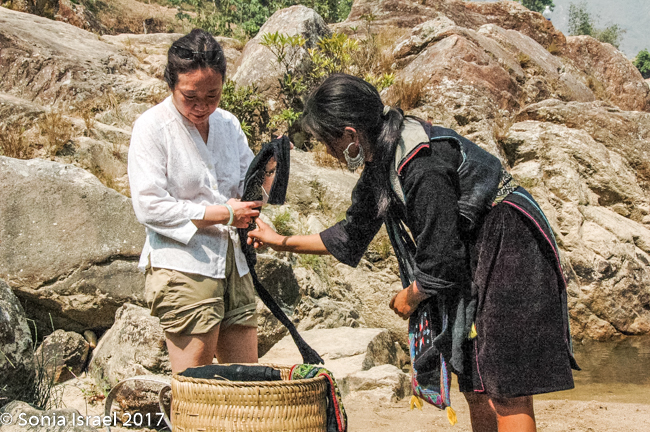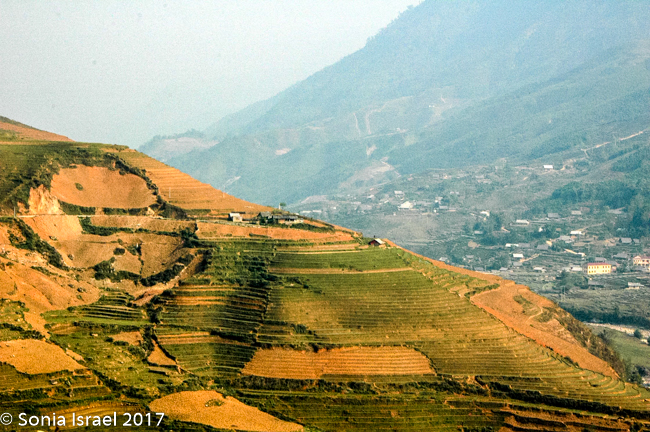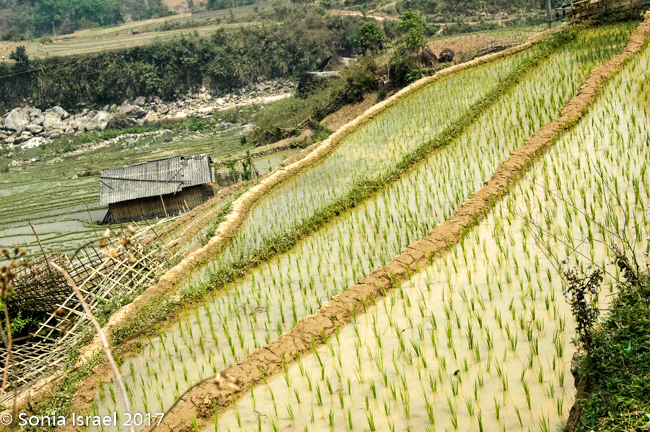Sapa and Northern Vietnam
March 22
When we were making up our itinerary, I said I wanted to go to Sapa. We were told we couldn’t fit it in. I said, “Find a way!” So they suggested we take the overnight train from Hanoi to Lo Cai in North Vietnam, spend the day, and take the overnight train back. And so we did.
When we got to the train station in Hanoi, we saw a beautiful car with red velvet curtains and a little red crystal lamp in the window. We got all excited, but our guide said, no – not our car. That was the Orient Exp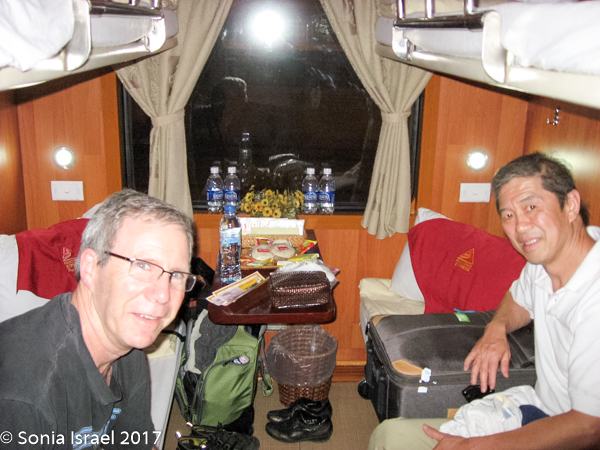 ress car. The next car had yellow velvet curtains with a little yellow crystal lamp in the window. No – not our car. We walked to the very end where our car was, as simple as could be. There were 4 beds (bunks) in the cabin. We asked where Phyllis and Ben would be, and the reply was, in here with you. And if it weren’t them, it would be two other people!
ress car. The next car had yellow velvet curtains with a little yellow crystal lamp in the window. No – not our car. We walked to the very end where our car was, as simple as could be. There were 4 beds (bunks) in the cabin. We asked where Phyllis and Ben would be, and the reply was, in here with you. And if it weren’t them, it would be two other people!
But the train was better than expected, other than the fact that there were 4 people per cabin. At least we knew the other two people! It turned out fine since we were tired, it was late, and we went right to sleep. Sleeping on a train is probably easier when it is a modern, smooth train. This train shook, rattled and rolled. Nevertheless, we all managed to sleep.
We arrived in Lao Cai at 5:30 in the morning and were met by our guide Hal. It was a 45 minute ride into Sapa through gorgeous blue mountains covered in haze towering above terraced rice fields on the sides of the mountains down to the valley. More on the terraces later.
We had breakfast at the Baguette and Chocolate (guess what we had for breakfast…By the way, have I mentioned Vietnamese coffee? It is very strong and served with condensed milk. Quite delicious). It was a small hotel that rented rooms for $20 a night. We were tempted to rent a room just to shower, but decided to bite the bullet and start the day. After breakfast we had free time for an hour while Hal went to get the permit for our trip into the villages. We walked around the Sapa market watching the different minorities (as they are called) – the Hmong, the Zhao, the Thai, the Thay – selling their vegetables, their fresh fish, fresh meat, and handicrafts. We always enjoy watching the people as they choose which peppers they want, or smell the fruit to decide if it is ripe, or just interact with their friends and neighbors.
And the colors! Each tribe has its own unique clothing and each is as colorful as the next. The women all had different headdresses. Many carried baskets on their backs. And their faces. Beautiful, often lined with history and stories that I wished I could ask them about.
I did sign to one woman that I wanted to buy a red headdress like hers. It turned out to be a large red scarf and she patiently showed me how to wrap it just right around my head.
We also took a walk around town and found a small path through the terraced rice fields. We even watched a farmer planting a small field (they throw the rice plants into the water). This is how to begin to understand a people – you watch them in their daily lives.
After the market and our walk, we got back into our van for the 50-minute ride to Ban Ho, one of the Zhao villages. Along the way we passed through the mountains again, this time with the sun up. The terraces are spectacular, like abstract paintings. They are primarily small rice fields. The villagers work them with their children and their water buffalo (more on water buffalo later). It is hard to explain the beauty of the lines seen from up above, many of them flooded with the sun reflected in them, or with small rice sprouting. And they go on for what seems like forever from one side of the mountain to the other.
When we got to Ban Ho, we stopped at a Thai house for a visit to the Happy Room (that is what they call bathrooms here). The Thai houses are up on stilts and they keep their animals under the house.
We then began our trek to visit the other villages. Three Hmong women accompanied us. That is what they do, they accompany the tourists, just walking quietly behind you or next to you, and slowly, slowly, they pull out their wares and try to sell them to you. After a bit of time, two dropped out and one, very patiently, accompanied us on the entire 2 hours (and five mile) trek.
Her name was Nau and she was 28 years old. She never went to school, got married when she was 13, and now has two children – 13 and 14 years old. Her children do not go to school either. They all get up early to work in the fields and then she hits the road, so to speak, to begin selling to tourists (you know – the usual embroidery, bracelets, hats, purses etc). But she spoke English and she explained things to us about the different tribes (more than our guide did!), and when a motor bike would come by, she would move us aside to protect us. And when we climbed down a 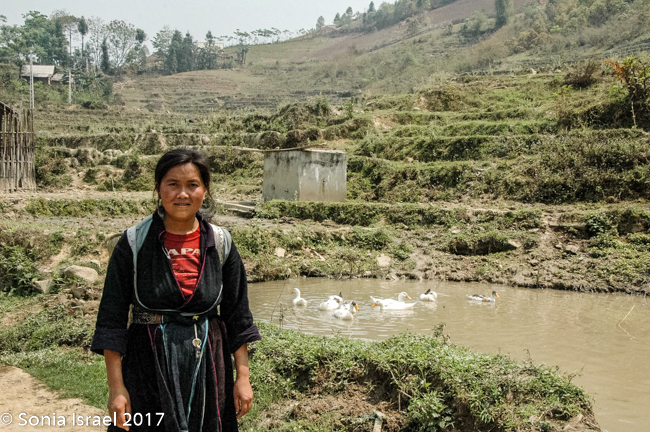 slippery area, she would hold our hands and help us (more than our guide did!). We enjoyed meeting her, learned a lot about the Hmong traditions and appreciated her patience. Yes, she was after making money, but she earned it. And we did buy things from her with pleasure.
slippery area, she would hold our hands and help us (more than our guide did!). We enjoyed meeting her, learned a lot about the Hmong traditions and appreciated her patience. Yes, she was after making money, but she earned it. And we did buy things from her with pleasure.
The trek was very interesting as we saw some of each of the minority tribes along the road. We walked for about an hour (did I mention we were doing this in the heat of the day?). We crossed bridges (made of metal which looked quite distressed). We walked up hills and up hills (seems like it was all up hill). Along the way we saw piglets and ducks and chicks and water buffalo. In fact, over the day we saw water buffalo eating along the rice fields, plowing the rice fields, wallowing in the mud, sitting in the water, waling down the street and just hanging around. We saw children climbing on them and men or women leading them. They are a big part of the working culture here.
We ended up at a Zhao house, which is quite different from the Thai or Hmong houses. The front room (all dirt floors) housed the kitchen and washing area. There was a small table with very low stools (every one here sits on very low or squats). The Zhau men get married when they are about 13 but they marry women who are 18-22. Why do they marry older women? Because they need the women to do the work! The second room was the bedroom and storage room. There was an attic filled with large bags of rice. The back and last room was elaborately painted and held an old armoire with a small TV – I guess that was the TV room. Ten people lived in that house, with three generations (four children).
We then walked back again to Ben Ho (and Nau continued to follow us). After about another hour, we ended up at a waterfall and went swimming. We all needed it as we were soaking wet from the heat. We didn’t actually go swimming (except Ben) as the rest of us did not have swim suits. But we did wade in and get as wet as possible just to cool off and clean up.
We then made our way back to the train station to head back to Hanoi. We had our routine down – Phyllis and Andy in the two upper bunks and Ben and I in the lower. The train arrived in Hanoi at 4:30 in the morning, and thus the next day began. (Please see the Hanoi and Halong Bay entry).
But I have to add that Sapa was the most beautiful and most interesting part of the trip to Vietnam. It was everything I love to visit in my travels. Exotic. Totally different culture. Colorful. Amazing market. Spectacular scenery. Sapa is not to be missed.
